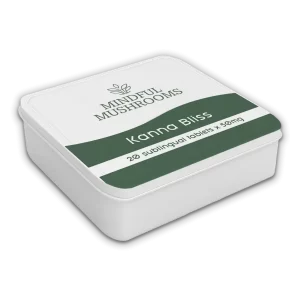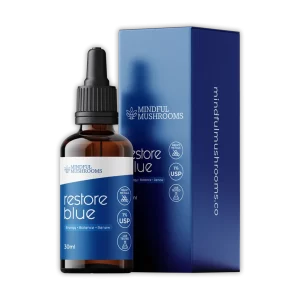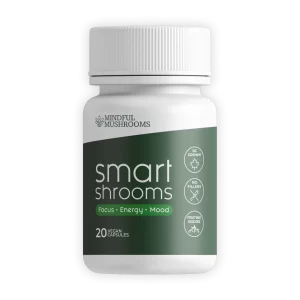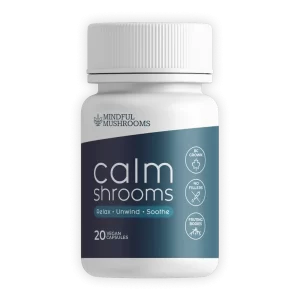Across continents and centuries, mushrooms have quietly played a significant role in the health and wellness traditions of countless cultures. Far from the culinary spotlight they enjoy today, these unique organisms were once prized for their restorative and balancing properties. Before clinical trials or lab-made supplements, ancient civilizations learned through observation and experience that certain mushrooms supported the body and mind in profound ways. Their presence in traditional wellness systems speaks not only to their potency, but also to their adaptability, resilience, and deep connection with the cycles of life.
In East Asia, mushrooms were revered not just as food, but as tonics—agents that nourished the body over time, strengthening what traditional Chinese medicine calls Qi, or life energy. Among these, Reishi stood out. Known as Lingzhi in Chinese, Reishi was considered the “Mushroom of Immortality” and was historically reserved for royalty and scholars. It was often consumed in decoctions or tinctures, praised for its calming effect on the spirit and its ability to promote longevity. Even today, Reishi is still widely respected in herbal traditions for its balancing qualities, particularly its role in emotional regulation and immune support.
In Japanese culture, mushrooms like Shiitake and Maitake have long been part of daily meals—not only for their umami-rich flavors but for their health-supportive properties. Used in traditional broths and infusions, these mushrooms were seen as strengthening agents—helping the body recover from illness, improving vitality, and preserving energy through seasonal transitions. The concept of food as medicine is deeply embedded in Japanese tradition, and mushrooms have always occupied a central place in that philosophy.
Meanwhile, in the forests of Eastern Europe and Russia, mushrooms were collected and consumed for both nourishment and recovery. Chaga, a hardened, dark fungus that grows on birch trees, was brewed into teas to support endurance and vitality during harsh winters. Chaga was not seen as a quick fix—it was consumed regularly, with reverence, as part of a broader system of seasonal, earth-connected living.
Indigenous cultures throughout North America also turned to mushrooms—particularly Turkey Tail and Artist’s Conk—for support in wellness and ritual. Their use was often integrated with other practices involving plants, smudging, and natural observation. While much of this traditional knowledge was passed down orally, what remains consistent across stories is a sense of relationship. Mushrooms were not simply harvested—they were honored as allies in healing and protection.
A common thread across these traditions is the long-term nature of mushroom use. Unlike modern approaches that often seek rapid results, traditional systems embraced mushrooms as part of a cumulative approach to health. These fungi were taken consistently, sometimes in small daily doses, to support balance, prevent depletion, and maintain harmony within the body. It wasn’t about stimulation—it was about restoration.
So, what exactly were people experiencing that led them to incorporate mushrooms so deeply into their wellness practices?
- Improved energy balance: Many traditional users reported more consistent, grounded energy levels over time.
- Greater emotional steadiness: Mushrooms like Reishi were associated with emotional calm and spiritual centering.
- Enhanced resilience: Whether physical (like stamina during winter) or immune-based, mushrooms were linked to stronger, more adaptable bodies.
- Support during transitions: Mushrooms were often used in seasonal shifts, post-illness recovery, or times of emotional stress.
What’s fascinating is that modern science is now catching up. Compounds such as beta-glucans, triterpenes, and polysaccharides, found in functional mushrooms, have been shown to support immune modulation, reduce oxidative stress, and promote neural regeneration. These are not speculative claims—they are the result of decades of research, particularly in Japan, South Korea, and China, where traditional and modern practices often overlap.
Still, the power of mushrooms in wellness extends beyond biochemistry. It also lies in their symbolism and rhythm. Mushrooms are unique organisms—not quite plants, not quite animals—that often emerge from decay, thrive in darkness, and regenerate ecosystems. In many traditions, they are seen as bridges between life and death, between the physical and the spiritual. They remind us that strength can come from softness, that healing is cyclical, and that growth often begins beneath the surface.
In modern life, integrating traditional mushroom practices doesn’t mean abandoning science or structure. Instead, it’s about reconnecting with ancient wisdom—using these fungi not as trends, but as teachers. Whether you’re brewing Reishi tea in the evening, adding Shiitake to your meals, or taking Turkey Tail tinctures during cold months, the key is consistency and intention.
Creating a ritual around mushroom use can be a simple but powerful act. A quiet moment with a warm infusion. A few mindful breaths as you prepare a mushroom-based broth. A pause to reflect on the rhythm of nature as you take a daily supplement. These moments aren’t just about health—they are about harmony.
Traditional wellness reminds us that nature is not separate from us—it is a mirror of our inner state. Mushrooms, with their complex networks and silent intelligence, are living examples of collaboration, patience, and regeneration. When we invite them into our daily lives, we’re not just supporting our physical health—we’re honoring a lineage of knowledge, a relationship that has stood the test of time.




